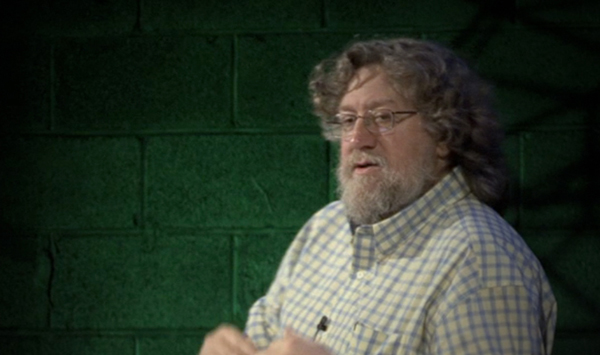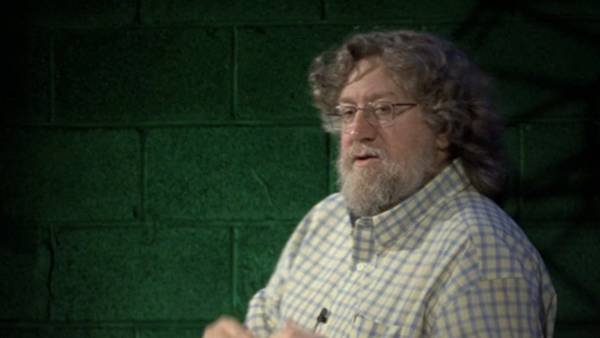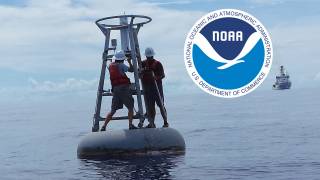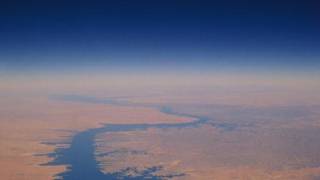Randall Carlson on Climate Change
Source: sacredgeometryinternational.com
Ask Randall : Climate Change[RIC Editor Note: Randall Carlson responds to a question from a facebook user regarding climate change.]

Hello Elizabeth.
I am responding to the question you raised regarding my opinion of the New York Times article on the recent work of physicist Richard Muller on climate change. You asked: “Can you look at his data and still maintain our recent temperature increases are just an anomaly?” My first impression is that you have not understood my position on this issue. To clarify that position, I would state that I do not consider the present warming of the climate to be an anomaly, rather I believe that the present scale and rate of climate change is well within the range of natural variability, and is, therefore, not anomalous at all. This opinion is based upon nearly three decades of in-depth study into the matter of climate change over multiple time scales. What has become apparent, from an ever growing body of evidence, from many diverse sources, is that the climate of the past has constantly changed, with a range of variability far exceeding anything experienced within recent history, say for example, since the inception of the Industrial Revolution.
Certainly you must be aware that our planet has undergone a series of glacial-interglacial ages, with the most recent great Ice Age ending only 10,000 years ago. The termination of that ice age was truly a global warming event. From a variety of proxies, most especially isotopic studies of ice cores extracted from glacial ice in Antarctica, Greenland and numerous mountain glaciers, it has become apparent that the warming that accompanied the shift out of the most recent ice age was extreme in its severity and catastrophically fast, perhaps as much as 15 to 20 degrees C in less than a decade. This is many times more intense than the .8 C degree warming of the last two centuries. In fact there were two catastrophic warming episodes at the close of the ice age separated by a 1400 year, equally fast, return to full glacial cold. As of this writing there is no agreed upon explanation for this climate change event. I will not at this point digress into the subject of what that warming did to the 6 million cubic miles of glacial ice piled up over the North American and European continents, nor the consequences of a very rapid, 400 foot sea level rise (!!) resulting from the melting of that glacial ice, except to say that the ensuing floods could only be described as biblical in scale, causing environmental havoc on a scale almost impossible to visualize. I will add that very few scientists are yet to be truly aware of the extraordinarily catastrophic nature of the events accompanying the planetary shift out of the last Ice Age. Coming to grips with natural climate changes of a scale and intensity of that most recent glacial termination, constitutes, in my opinion, the paramount unresolved scientific question of our time. It may, in fact, have led to the near extermination of the human race.
Additionally, ongoing studies of the palaeoclimate record are revealing numerous other extreme climate changes occurring over multiple time scales, none of which can be blamed on anthropogenic consumption of fossil fuels. Throughout the 10,000 years of the Holocene (the current geological epoch in which we find ourselves) the natural variability of the global temperature appears to have ranged from about 2 to 4 degrees C over time scales ranging from decades to centuries. From the ice core records it is apparent that at no time has there been any significant period of stable climate, rather it has been in a constant state of flux; and, human societies have frequently been the victims of the planets’ natural climate variability.
In regards to recent history, I would like to remind you that between roughly the mid 14th century and the mid 19th century, the planet was in the grip of what climatologists refer to as the Little Ice Age (LIA). It is acknowledged that this period included some of the coldest centuries since the end of the Great Ice Age. Worldwide, glaciers grew to their greatest extent in 10,000 years. The annals of European history are replete with well documented episodes of whole villages that had existed for centuries, being overrun by the massively growing glaciers. These glaciers began to recede with the global warming that commenced in the early to mid 19th century and have been receding more or less uniformly to this day. Let me here emphasize an important point, the recession of modern glaciers began at least a full century before the introduction of significant amounts of carbon dioxide to the global atmosphere by the burning of fossil fuels.
Prior to the onset of the LIA the planet enjoyed a period of warmth, usually referred to as the Medieval Warm Period (MWP) that began with the close of the Dark Ages, about 950 AD. That this period was at least as warm as today, more likely warmer than today, is evidenced by the fact that Scandinavians were able to colonize and farm the west coast of Greenland where today the ground is perennially frozen. In addition, vineyards flourished in England some 500 km (300 miles) further north than they exist today. Many mountain regions around the globe exhibit evidence of farming at elevations many hundreds of feet higher than is possible at present. Some studies point to a significantly higher sea level during the MWP, perhaps as much as 2 to 4 feet, which of course implies a substantially reduced glacial mass relative to the present. Al Gore in his documentary An Inconvenient Truth used statistical sleight-of-hand to conceal the reality of the Medieval Warm Period and most of his audience, as far as I can tell, naively accepted his dismissal of a very real, well documented climate phenomenon.
Obviously the MWP cannot be blamed on the burning of fossil fuels.
Interestingly, during the MWP human society flourished, primarily because the warmer climate allowed for a longer growing season, as well as a greater geographic range for the practice of agriculture. This enhanced condition for farming resulted in crop surpluses, which resulted in a better fed, better nourished population. This led in turn to a significant increase in human population during this time, with associated longer life spans, decreased infant mortality and increased leisure time that advanced the potential for learning, the transmission of knowledge and the cultivation of the Arts. It was midway through the MWP that European society saw the inception of the great cathedral building era, made possible entirely by the factors mentioned above, when there was enough surplus food and consequent social wealth to support armies of artisans, craftsmen, masons, glaziers, sculptors, engineers, carpenters, astronomers, etc. It is no coincidence that the end of the cathedral building era in the early 14 century coincided with the onset of the Little Ice Age and the ensuing harsher conditions that were the consequence of a cooling climate. Nor is it any coincidence that the repeated crop failures, associated with the onset of LIA cold, led to a malnourished population, which in turn led to weakened immune systems, which in turn was followed by the onset of plague epidemics that wiped out as much as one third of the European population. Historically, periods of warmth have been periods of population growth, improved living conditions and social progress generally, while periods of cold have seen famines, pestilence, population declines, and social deterioration.
Now in regards to Mullers’ work, which was covered by the New York Times, I will say this: (while trying not to get too technical) to come up with a temperature that truly represents a global average is a very tricky business. It must rely on three different sources of information: ground based temperature sensors, weather balloon based sensors and satellite sensors. Each of these will yield somewhat different results. Muller and company employed ground based sensors which are known to have a bias. He claims to have adjusted for this bias but this claim has been disputed by others. All surface temp stations are categorized according to their perceived reliability. Many ground surface temperature stations have been compromised by the Urban Heat Island effect, which means simply that as urban development occurs in certain areas near the surface observing stations, the temperature rises locally, because of reduced vegetation cover, increased amounts of heat absorbing asphalt, concrete, buildings, proximity to AC condenser units and other machinery, etc, etc. This temperature increase is very real but has nothing to do with increases of CO2 gas in the atmosphere. If an observing station was originally sited in a rural or semi-rural location, and that location has undergone development, causing the local environment to retain more heat, which is the case for the majority of currently operational stations, it will give a false positive. It has been pointed out that Muller used a reliability rating for temperature stations that is over a decade old. New reliability ratings have recently become available and when they are applied at least half of the presumed average global temperature increase disappears. For an in-depth discussion of this issue see the paper “An area and distance weighted analysis of the impacts of station exposure on the U.S. Historical Climatology Network temperatures and temperature trends.”
Second, his failure to find a solar signal in his computer model, implying that the Sun is not playing a role, is contradicted by masses of evidence collected over a period of decades by solar physicists, astronomers and astrophysicists. Solar physics is a complex area of research but an enormous amount of data supports a significant role for the Sun in determining global temperatures. Think for a moment upon the profound difference in temperature that occurs between daytime and nighttime at any given time of year, or between summer and winter, both examples being totally the result of the amount of solar insolation penetrating the Earth’s atmosphere. In the case of annual summer/winter changes, they are due entirely to nothing more than the angle at which the Suns’ rays penetrate the atmosphere, with only a few degrees angular change manifesting in a substantial change in temperature. Also, new evidence regularly emerges suggesting that the solar constant is not invariable. Even a small change in solar output could be amplified through a variety of feedback mechanisms, and research in this area is ongoing. Again, climate changes in the past that utterly dwarf anything experienced in recent times obviously cannot be blamed upon anthropogenic fossil fuel burning. So what does that leave? Clearly the Sun must be a prime candidate. For more on the subject of solar contribution to global warming see “SOLAR ACTIVITY AND CLIMATE CHANGE—A SUMMARY” and “Sunspots do impact climate”
[...]
Read the full article at: sacredgeometryinternational.com
* SacredGeometryInternational.com Editors note: For an succinct overview of Randall’s research regarding “climate change” you can view the video of his interview with RealitySandwich.com entitled,“Climate Change: A Catastrophist’s Perspective” for a better understanding of his perspective.
More from Randall Carlson on Red Ice Radio:
Randall Carlson - Hour 1 - Cycles of Catastrophe & Cosmic Patterns
Randall Carlson - Cycles of Catastrophe & Cosmic Patterns - Hour 2, 3






















